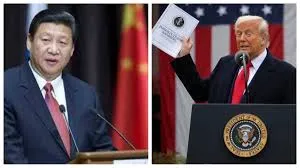
President Trump Faces 34% Tariff from China on US Exports
In a significant escalation of trade tensions, China has announced it will impose a 34% tariff on all U.S. imports starting April 10, 2025. This measure mirrors the U.S. administration’s recent “Liberation Day” tariffs, which saw duties on Chinese goods increase by 34%.
Beyond tariffs, China is implementing additional countermeasures, including:
- Export Controls: Restrictions on rare earth elements vital for high-tech manufacturing, such as samarium and gadolinium.
- Import Suspensions: Halting imports from certain U.S. poultry suppliers due to health concerns.
- Sanctions: Blacklisting over two dozen U.S. companies, primarily in defense-related sectors.
In response, China has filed a complaint with the World Trade Organization, labeling the U.S. tariffs as “unilateral bullying” and a violation of international trade norms.
These developments have precipitated global market volatility. Major U.S. stock indices, including the S&P 500 and Nasdaq, experienced significant declines, each falling by nearly 3%. European and Asian markets also saw substantial drops, fueling concerns about a potential global recession.
The escalating trade war has led to strained relations among traditional U.S. allies, many of whom are reassessing their trade policies and seeking alternative markets. Economists warn that the intensifying tariffs could lead to stagflation, characterized by rising costs coupled with stagnant economic growth.
As both nations dig in their heels, the prospect of a prolonged trade conflict looms, with significant implications for global trade dynamics and economic stability.